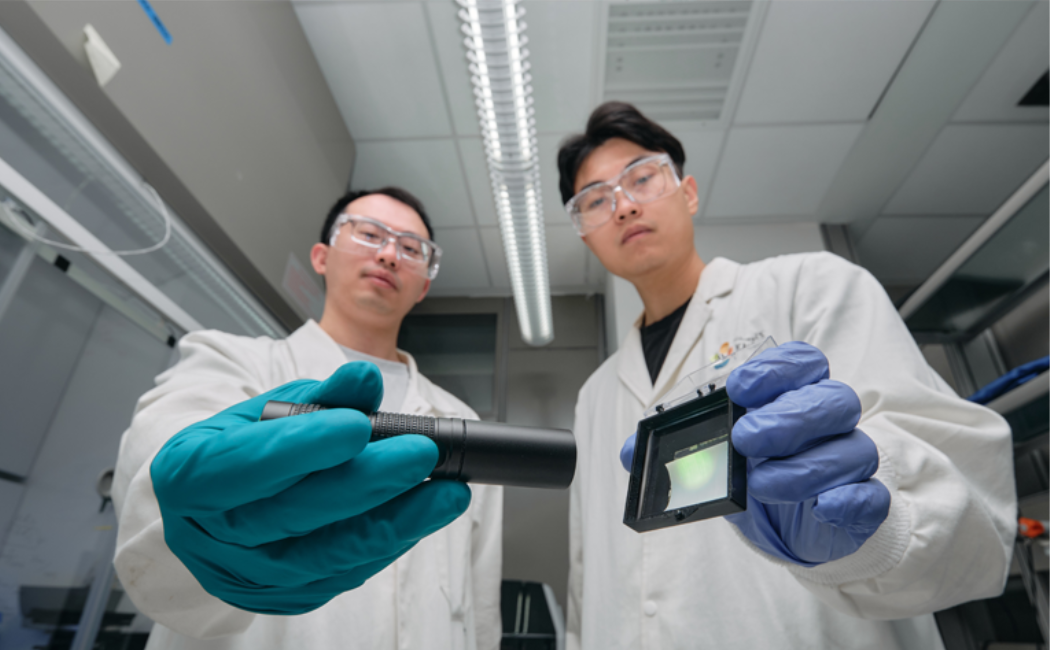
01 August, 2023
Hong Wang (left) and Tengyue He (right) demonstrate their novel scintillating material, which produces X-ray images with a resolution double that of current commercial X-rays. © 2023 KAUST; Eliza Mkhitaryan.
A multidisciplinary KAUST team is developing novel scintillation materials for X-ray imaging applications. These materials light up, or “scintillate,” in response to X-rays that have passed through them. The patterns of light from the scintillation screens create the images that reveal the desired details of the sample being examined.
Researchers worldwide are continually seeking new scintillators that will provide greater sensitivity at lower cost and with simpler fabrication methods. Some of the most promising alternatives have been compounds containing lead that are not only toxic, but have stability problems that limit their commercial potential. Postdoc Hong Wang, Ph.D. candidate Tengyue He and colleagues in Omar Mohammed’s research group are now exploring the potential of chemically stable lead-free materials that are nontoxic and readily processed.
Learn about the new scintillation materials for X-ray imaging applications being developed by KAUST scientists. © 2023 KAUST; Eliza Mkhitaryan.
“We were surprised to find that compounds called organocopper halides have excellent X-ray responses, including high light yield and low detection limit,” says Wang. “We didn’t believe this result until we checked it many times.”
Wang adds that it was a significant technical challenge to incorporate the new materials into uniform scintillator screens. The team went through a lengthy process of exploring methods to optimize the preparation techniques. They finally managed to combine their halides with an organic polymer to achieve an X-ray imaging screen with an exceptional scintillation level. “It has one of the highest values so far reported for scintillation materials based on organic metal halides,” Wang says.
Read more at KAUST Discovery.